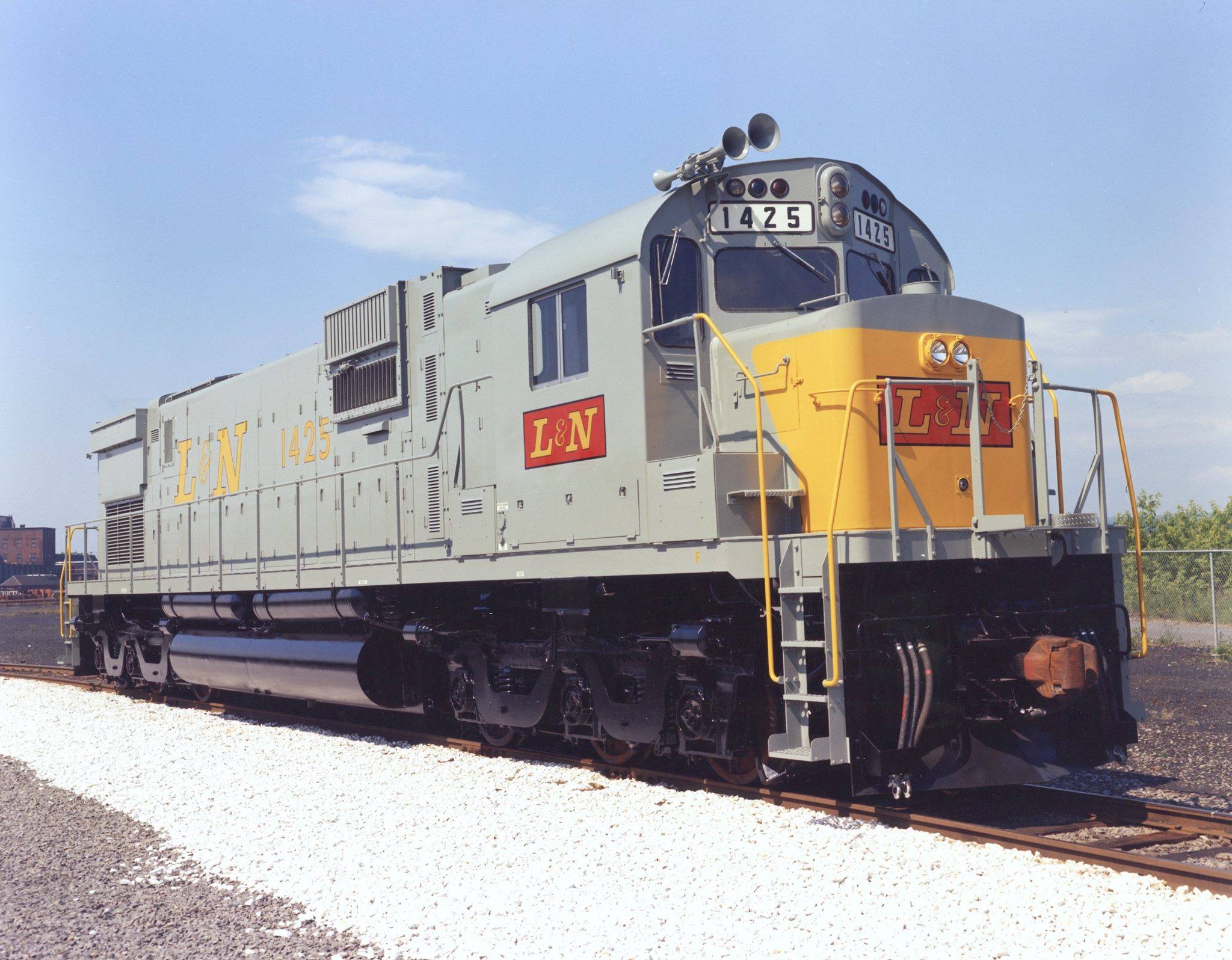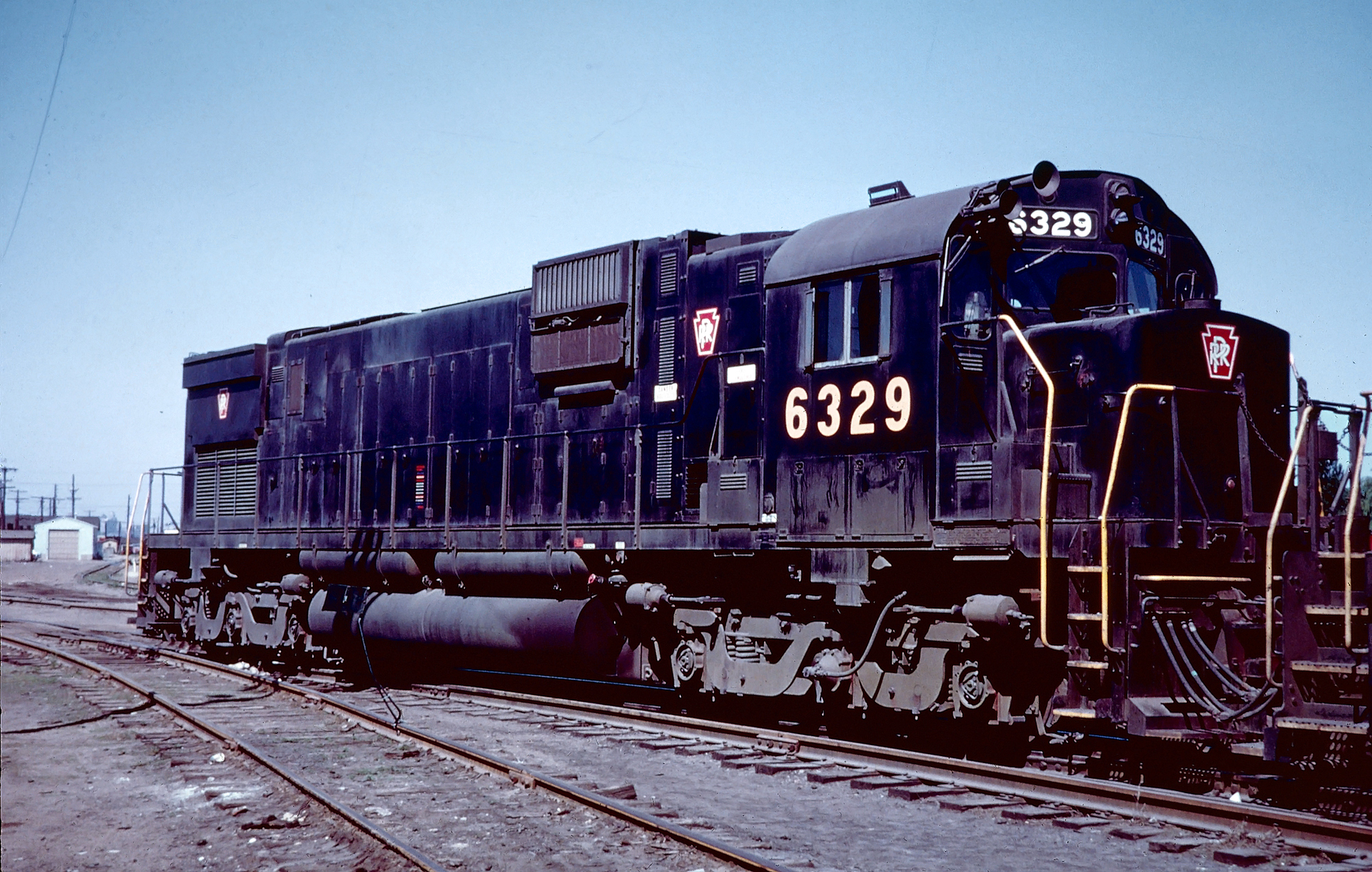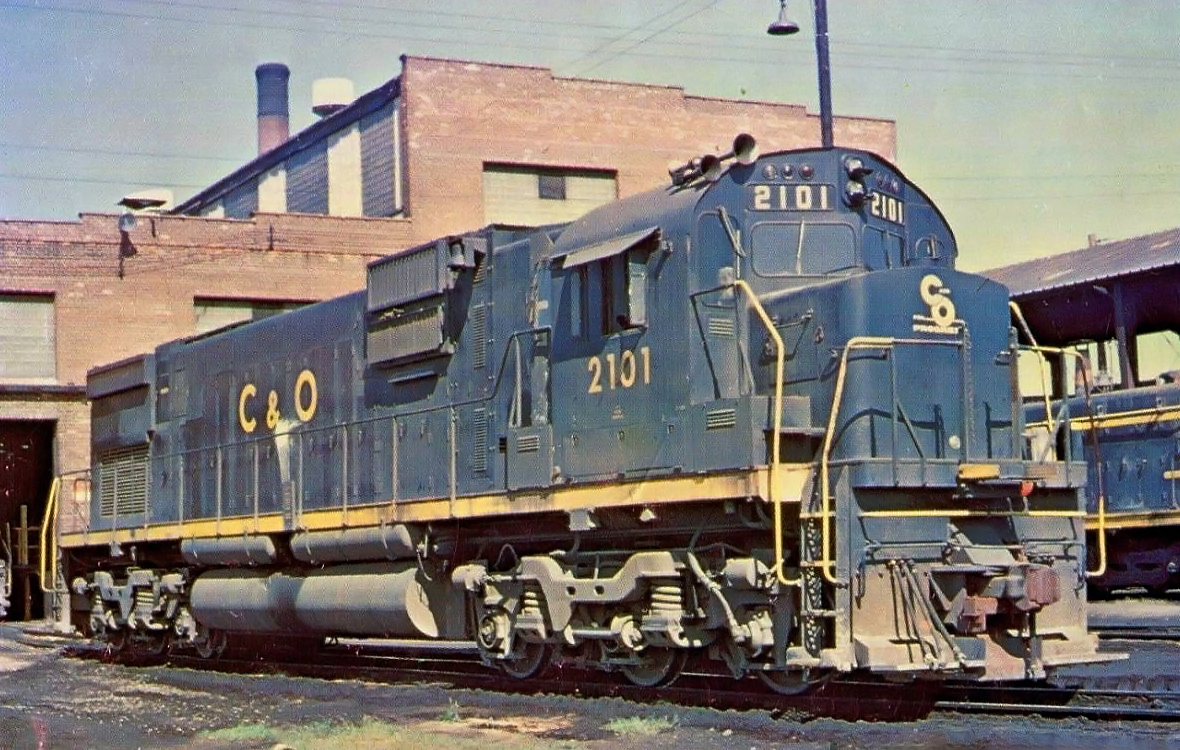Alco "C630" Locomotives: Specs, Roster, Data Sheet
Last revised: December 23, 2024
By: Adam Burns
The C630 was Alco's second model
in its six-axle series. Capable of producing more horsepower than its
predecessor, the model sold well, but not as well as the C628 with more
than 100 purchased between its Schenectady
and Montreal plants.
Overall these six-axle behemoths were as powerful as they appeared, which unfortunately is one reason the American Locomotive Company (Alco) did not sell more of them; the high horsepower market did not take off until the early 1970s.
Overview
Still, some railroads were beginning to realize the potential C-C setups offered and, as such, a number of lines that moved heavy tonnage, like coal, purchased at least a few C630s.
Some roads, like the Reading, continued to stick with Alco despite the builder's inherent flaws by that time. Of all Alco six-axle Centuries, the C630 has been the best preserved model with three units known to exist; Union Pacific #2907, Norfolk & Western #1135, and Reading #5308 (the latter of which is still operational).
Photos
 An American Locomotive builder's photo featuring new Louisville & Nashville C630 #1425 at the plant in Schenectady, New York in June, 1966. Warren Calloway collection.
An American Locomotive builder's photo featuring new Louisville & Nashville C630 #1425 at the plant in Schenectady, New York in June, 1966. Warren Calloway collection.The C630 began production in 1965 which was a more powerful version of the earlier C628 that had been in the company's catalog since 1963. The new model could produce a respectable 3,000 horsepower using Alco's 251E prime mover.
By this point, most of Alco's orders came from loyal customers as it became almost impossible for the manufacturer to either gain or earn back new customers with its troubled early prime movers.
Buyers of the C630 included:
- Union Pacific
- Southern Pacific
- Pennsylvania
- Reading
- Norfolk & Western
- Atlantic Coast Line
- Louisville & Nashville
- Chesapeake & Ohio.
Additionally, Canadian Pacific, Canadian National, and the Pacific Great Eastern purchased examples of the M630 and C630M. By the time production had ended in 1969 133 C630s, C630Ms, and M630s had been built.
The C630, and the Century line in general, offered the most tractive effort of any locomotive in its class, even eclipsing the Electro-Motive Division and General Electric.
As such, railroads showed real interest in the designs as many began to understand the value of six-axle setups and the traction they provided.
For instance, the C630 could produce 85,850 pounds of starting effort and 79,500 continuous making them ideal for heavy drag service hauling freight such as coal and ore.
Through the end Alco continued to rely on General Electric to supply it with internal components for its locomotives despite the fact that GE was now a competitor.
 A former Pennsylvania C630, #6329, is seen here in Syracuse, New York during the early Penn Central era in September, 1969. Fred Byerly photo. American-Rails.com collection.
A former Pennsylvania C630, #6329, is seen here in Syracuse, New York during the early Penn Central era in September, 1969. Fred Byerly photo. American-Rails.com collection.At first railroads liked the six-axle Centuries very much considering Alco no longer had significant reliability problems that plagued its early designs. However, the longer railroads operated them the more they noticed the significant wear the units produced on the track structure.
Data Sheet and Specifications
| Entered Production | 7/28/1965 (Atlantic Coast Line #2011) |
| Years Produced | 7/28/1965-10/27/1967 |
| Model Specification | DL630 |
| Engine | 251E, V-16 |
| Horsepower | 3,000 |
| RPM | 1,100 |
| Carbody Styling | Alco |
| Length (Between Coupler Pulling Faces) | 69' 6" |
| Weight | 394,000 Lbs. (Optional ballasting available up to 420,000 Lbs.) |
| Dynamic Brakes | Optional |
| Trucks | C-C |
| Truck Type | Hi-Ad (High Adhesion) |
| Truck Wheelbase | 12' 6" |
| Wheel Size | 40" |
| Traction Motors | GE 752 (6) |
| Traction Generator (AC) | GTA9 |
| Gear Ratio | 74:18 |
| Tractive Effort Rating | 79,500 Lbs. at 12 MPH |
| Top Speed | 70 MPH |
Production Rosters
C630
Total Built = 77
| Owner | Road Number(s) | Construction Number(s) | Completion Date |
|---|---|---|---|
| Atlantic Coast Line | 2011-2013 | S-3480-1 thru S-3480-3 | 7/1965-12/1965 |
| Chesapeake & Ohio | 2100-2103 | S-3486-01 thru S-3486-04 | 10/1967 |
| Louisville & Nashville | 1425-1432 | S-3486-01 thru S-3486-08 | 6/1966-7/1966 |
| Norfolk & Western | 1130-1134 | S-3456-01 thru S-3456-05 | 5/1966 |
| Norfolk & Western | 1135-1139 | S-3480-01 thru S-3480-05 | 9/1967 |
| Pennsylvania | 6315-6329 | S-3466-01 thru S-3466-15 | 10/1966-12/1966 |
| Reading | 5300-5306 | S-3442-01 thru S-3442-07 | 6/1966 |
| Reading | 5307-5311 | S-3487-01 thru S-3487-05 | 9/1967-10/1967 |
| Southern Pacific | 7800-7814 | S-3439-01 thru S-3439-15 | 3/1966-4/1966 |
| Union Pacific | 2900-2909 | S-3440-01 thru S-3440-10 | 5/1966-10/1966 |
C630M
Total Built = 56
| Owner | Road Number(s) | Construction Number(s) | Completion Date |
|---|---|---|---|
| Canadian National | 2000-2001 | M-3479-01 thru M-3479-02 | 8/1967 |
| Canadian National | 2002-2043 | M-3491-01 thru M-3491-42 | 12/1967-6/1968 |
| Canadian Pacific | 4500-4507 | M-6002-01 thru M-6002-08 | 7/1968-9/1968 |
| Pacific Great Eastern | 701-704 | M-6029-01 thru M-6029-04 | 7/1969 |
The C630M was built at the Montreal Locomotive Works (MLW) with the "M" designated "Canadianization" for locomotive requirements in that country. When Schenectady ended operations on December 31, 1968, production of this model continued at MLW but were re-designated as the M630.
M630
Total Built = 29
| Owner | Road Number(s) | Construction Number(s) | Completion Date |
|---|---|---|---|
| Canadian Pacific | 4550-4553 | 6030-01 thru 6030-04 | 9/1969-10/1969 |
| Canadian Pacific | 4570-4575 | 6030-05 thru 6030-10 | 10/1969-11/1969 |
| Canadian Pacific | 4508 | 6030-11 | 11/1969 |
| Canadian Pacific | 4509-4516 | 6030-12 thru 6030-19 | 12/1969-1/1970 |
| Canadian Pacific | 4554-4555 | 6030-20 thru 6030-21 | 2/1970 |
| Canadian Pacific | 4556-4557 | 6036-01 thru 6036-02 | 2/1970 |
| Canadian Pacific | 4576-4581 | 6036-03 thru 6036-08 | 2/1970-3/1970 |
Sources
- Foster, Gerald. A Field Guide To Trains. New York: Houghton Mifflin, 1996.
- Kirkland, John F. Diesel Builders, The: Volume Two, American Locomotive Company And Montreal Locomotive Works. Glendale: Interurban Press, 1989.
- Pinkepank, Jerry A. Diesel Spotter's Guide. Milwaukee: Kalmbach Publishing Company, 1967.
- Solomon, Brian. Alco Locomotives. Minneapolis: Voyageur Press, 2009.
 Chesapeake & Ohio C630 #2101 at Wyoming Yard in Grand Rapids, Michigan during July of 1974. The C&O purchased a small batch of four of these big beasts, #2100-2103 in 1967. Plagued with reliability issues they were never liked by the railroad.
Chesapeake & Ohio C630 #2101 at Wyoming Yard in Grand Rapids, Michigan during July of 1974. The C&O purchased a small batch of four of these big beasts, #2100-2103 in 1967. Plagued with reliability issues they were never liked by the railroad.In any event, while most companies that purchased the C630 operated main lines that could handle the weight they still found the wear on their infrastructure far too excessive.
As such, nearly all of the C630s were retired by the 1980s. Interestingly, the M630s and M630Ws purchased by both Canadian National, Canadian Pacific, and Pacific Great Eastern (later British Columbia Railway) were well liked and most remained in regular freight service through the early 1990s.
Recent Articles
-
Rio Grande 2-8-2 Locomotives (Class K-28): Specs, Roster, Photos
Apr 14, 25 10:24 PM
Rio Grande's Class K-28 Mikados were its newest narrow-gauge steam locomotives since the Mudhens of the early 1900s. Today, three survive. -
Rio Grande K-27 "Mudhens" (2-8-2): Specs, Roster, Photos
Apr 14, 25 05:40 PM
Rio Grande's Class K-27 of 2-8-2s were more commonly referred to as Mudhens by crews. They were the first to enter service and today two survive. -
C&O 2-10-4 Locomotives: Specs, Roster, Photos
Apr 13, 25 04:07 PM
Chesapeake & Ohio's T-1s included a fleet of forty 2-10-4 "Texas Types" that the railroad used in heavy freight service. None were preserved.


